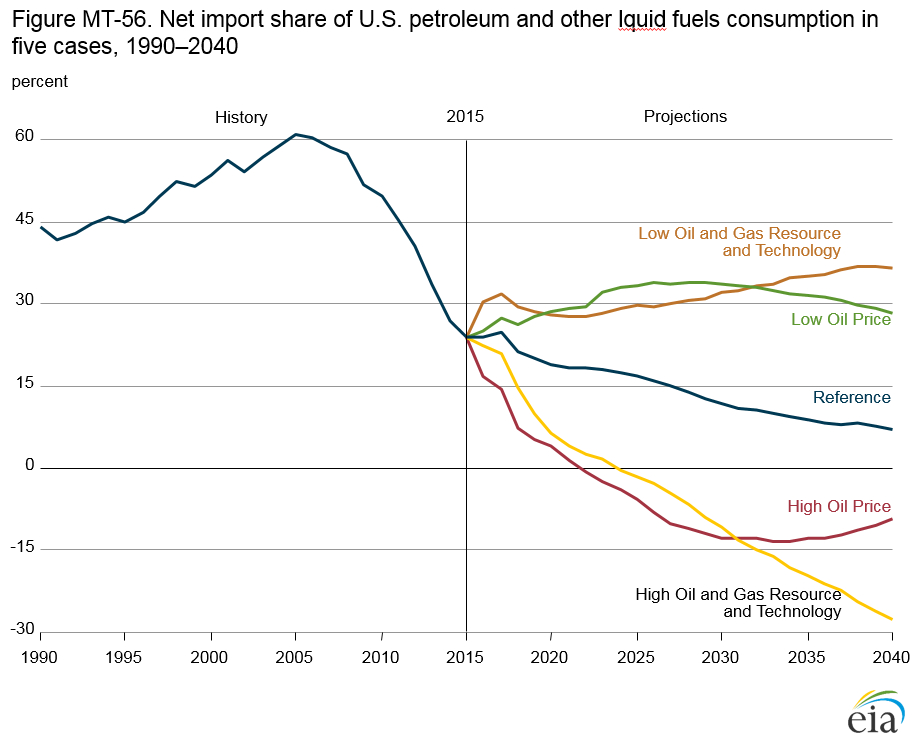When Congress threw ethanol producers a gigantic bone by expanding the Renewable Fuel Standard through the Energy Independence and Security Act of 2007 by annually increasing the amount of ethanol that fuel refiners are required to blend into the nation’s gasoline supply, they blithely made the crucial assumption that Americans’ gasoline consumption would continue to increase indefinitely. Thanks to heightened fuel efficiency and slackened driving habits, however, Americans’ demand for gasoline has actually decreased, meaning that refiners would have to blend gasoline with ethanol well above the E10 level that is considered safe for most of the older cars and trucks on the road today in order to comply properly.
Or, to put it in one succinct visual, the American Interest caught this from the EIA‘s annual energy outlook released earlier this month:

Consumption of biofuels grows in the AEO2014 Reference case falls well short of the Energy Independence and Security Act of 2007 (EISA2007) RFS target of 36 billion ethanol gallon equivalents in 2022… Demand for motor gasoline ethanol blends (E10 and E15) falls from 8.7 MMbbl/d in 2012 to 7.9 MMbbl/d in 2022, while total biofuels consumption rises from 14 billion gallons to 16 billion ethanol gallons equivalent over the same period.
Entirely thanks to the federal government’s mandate that people buy their product, the ethanol industry has been raking in record profits recently — which is why they are railing against the Environment Protection Agency’s indication late last year that they might lower 2014’s RFS volumetric standards (a decision on which we’re still waiting despite the already obliterated charade about corn ethanol being the slightest bit “green“). Via the AP:
Just as ethanol producers have been seeing the industry’s most profitable months ever, the federal government is considering whether to lower the amount of the corn-based fuel that must be blended into gasoline. …
EPA officials say fewer gallons of ethanol are necessary because the fuel efficiency of cars improved more quickly than expected, helping lower fuel demand. The U.S. consumed about 134 billion gallons of gasoline last year, about 6 percent less than the record high of about 142 billion gallons consumed in 2007, according to the U.S. Energy Information Administration.
The EPA, which has received more than 343,000 comments on its proposal, plans to reach a final decision in late June.
Frustrating for the ethanol industry is that the EPA’s recommendation came just as ethanol was hitting its stride in profitability.
Well, cry me a river.







Join the conversation as a VIP Member